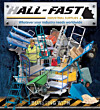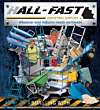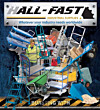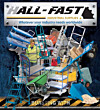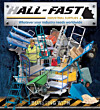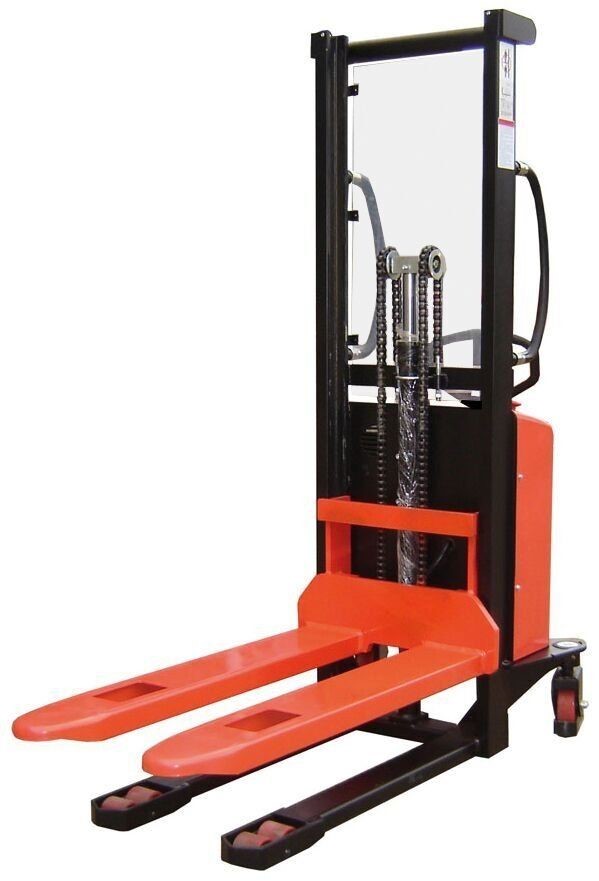
Maximizing Efficiency in Limited Warehouse Space
Small warehouse operations face unique challenges when it comes to material handling equipment. With limited square footage, every inch matters—making the selection of the right stacker a critical decision that impacts daily operations, productivity, and ultimately, profitability. Finding the best stackers for small warehouses requires careful consideration of space constraints, aisle width, lifting capabilities, and manoeuvrability.
Unlike larger facilities with abundant space for conventional forklifts and extensive racking systems, small warehouses need material handling solutions specifically designed for compact environments. The ideal stacker for these operations balances functionality with space efficiency, providing essential lifting and moving capabilities without dominating valuable floor space.
Key Considerations When Choosing Stackers for Small Warehouses
When evaluating the best stackers for small warehouses, several factors should guide your decision-making process:
- Available Aisle Width
Small warehouses typically feature narrower aisles than larger facilities, making aisle width a primary consideration:
- Standard stackers generally require aisles of 8-10 feet (2.4-3 meters)
- Narrow aisle stackers can operate in passages as tight as 6-7 feet (1.8-2.1 meters)
- Very narrow aisle (VNA) stackers function in aisles as slim as 5-6 feet (1.5-1.8 meters)
Measuring your narrowest operational aisles before selecting equipment ensures your chosen stacker can navigate throughout your entire facility.
- Lifting Height Requirements
Maximizing vertical space becomes especially important in small warehouses:
- Standard lifting heights of 10-12 feet (3-3.7 meters) suit facilities with lower racking
- Extended mast options reaching 16-20 feet (4.9-6.1 meters) take advantage of vertical storage
- Specialized high-lift models achieving 25+ feet (7.6+ meters) maximize cubic storage in facilities with sufficient ceiling height
Analyse your highest storage positions and select a stacker that comfortably reaches your maximum height requirements with appropriate safety margins.
- Load Capacity Needs
Understanding your typical and maximum load weights prevents under-specifying equipment:
- Light-duty stackers handling 1,000-2,000 pounds (450-900 kg) suit retail back rooms and light manufacturing
- Medium-duty models supporting 2,000-3,000 pounds (900-1,350 kg) accommodate most small warehouse operations
- Heavy-duty units managing 3,000-4,000+ pounds (1,350-1,800+ kg) address demanding applications with heavier inventory
Remember that lifting capacity typically decreases as lift height increases, so consider your heaviest loads at maximum heights when specifying equipment.
- Power Options for Small Spaces
Power source selection impacts operational efficiency and facility requirements:
- Manual stackers require no charging infrastructure but demand operator physical effort
- Semi-electric models with powered lift but manual movement offer a balance for occasional use
- Fully electric stackers maximize productivity but need charging stations and battery management
- Lithium-ion powered units provide rapid opportunity charging and reduced maintenance
Small warehouses often benefit from lithium-ion powered options that eliminate the need for dedicated charging rooms and ventilation systems required for traditional lead-acid batteries.
Top Stacker Categories for Space-Constrained Facilities
Several stacker classifications have proven particularly effective in small warehouse environments:
Walkie Stackers: Versatile Space-Savers
Walkie stackers offer exceptional versatility for small operations:
- Compact footprint typically 30-36 inches (76-91 cm) wide
- Walk-behind operation eliminating space needed for operator compartments
- Tight turning radius navigating congested areas and narrow aisles
- Variable lift heights from entry-level to extended reach options
- Economical pricing making them accessible for smaller businesses
These units excel in mixed-use environments where the same equipment handles receiving, put away, and order picking functions.
Straddle Stackers: Flexible Pallet Handling
Straddle stackers feature outrigger legs that straddle pallets, offering unique advantages:
- Handle standard pallets without platforms or skids
- Adjustable straddle width on some models adapting to different pallet sizes
- Narrower profile than counterbalance designs
- Lower cost than equivalent counterbalance units
- Simpler maintenance with fewer complex components
Small warehouses with floor-level pallet storage particularly benefit from straddle designs for their ability to lift from the floor without requiring pallets on raised surfaces.
Counterbalance Stackers: No Outriggers Required
When floor-level access without outriggers is required, counterbalance stackers deliver:
- No forward legs allowing direct approach to racks and shelving
- Three-wheel design maintaining tight turning radius
- Free lift options operating in lower-ceiling areas
- Higher capacity models available for heavier loads
- Familiar operation similar to counterbalance forklifts
Though typically larger than straddle models, compact counterbalance stackers provide operational flexibility when working with block stacked pallets or solid-bottom racking.
Powered Pallet Stackers: Entry-Level Solutions
For operations transitioning from manual pallet jacks, powered pallet stackers offer an affordable entry point:
- Minimal training requirements for operators familiar with manual pallet jacks
- Lower acquisition cost than more specialized equipment
- Simplified maintenance with fewer complex systems
- Lighter weight for facilities with floor loading restrictions
- Compact storage when not in use
These units particularly suit small warehouses with predominantly floor-level storage and occasional need for raised positioning.
Real-World Applications in Small Warehouses
The best stackers for small warehouses demonstrate their value across various industries and applications:
Retail Back Room Operations
Limited-space retail stockrooms benefit from compact stackers that:
- Store seasonal merchandise in overhead locations until needed
- Maximize vertical space in receiving areas
- Handle varying carton and pallet sizes
- Operate safely in customer-adjacent environments
- Navigate through standard doorways between spaces
Small Manufacturing Facilities
Manufacturing operations in limited spaces utilize stackers for:
- Raw material handling and storage
- Work-in-process movement between production stations
- Finished goods organization and preparation for shipping
- Tool and die changes requiring precision lifting
- Maintenance activities requiring access to elevated equipment
E-Commerce Fulfilment Centres
Growing e-commerce operations leverage space-efficient stackers for:
- Inventory put away in dense storage configurations
- Order picking from multiple vertical levels
- Replenishment of forward picking locations
- Processing returns to overhead storage positions
- Loading delivery vehicles in confined shipping areas
Innovative Features Benefiting Small Warehouse Operations
Modern stackers incorporate numerous features particularly valuable in space-constrained environments:
Compact Mast Designs
Advanced engineering delivers:
- Improved visibility through the mast during operation
- Lower collapsed height for passing through doorways and under obstacles
- Multiple stage options balancing extended height with collapsed dimensions
- Triplex masts providing maximum height from minimum collapsed profile
- Nested I-beam construction maintaining strength while reducing dimensions
Manoeuvrability Enhancements
Navigating tight spaces becomes easier with:
- Electronic power steering reducing effort and improving precision
- Tight turning radius specifications minimizing required operating space
- Proportional lift and lower controls for precise load positioning
- Creep speed functionality for operation in congested areas
- Anti-rollback features improving safety on inclines
Space-Saving Ergonomic Elements
Operator comfort and safety features include:
- Folding operator platforms on stand-up models when space is limited
- Tiller arm designs that allow operation in narrower aisles
- Compact battery compartments without sacrificing run time
- Intuitive controls reducing training time and improving efficiency
- PIN access controls preventing unauthorized use in shared spaces
Finding the Right Balance for Your Operation
Identifying the best stackers for small warehouses ultimately requires balancing several factors:
- Current needs vs. future growth - Consider how your requirements might evolve
- Frequency of use - Match equipment sophistication to utilization patterns
- Budget constraints - Balance acquisition cost against productivity benefits
- Operator skill levels - Select equipment matching your workforce capabilities
- Maintenance support - Ensure local service availability for your chosen equipment
Expert Assistance for Your Small Warehouse Equipment Needs
Navigating the many options for small warehouse stackers can be challenging. At Hall-Fast, we specialize in matching the right equipment to specific operational requirements, particularly for space-constrained facilities.
Our comprehensive selection of industrial and commercial handling and lifting equipment includes numerous options specifically designed for small warehouse environments. From basic manual stackers to advanced electric models with specialized features, we can help you identify the perfect balance of functionality, size, and value.
Explore our full range of material handling solutions at Hall-Fast Industrial and Commercial Equipment or contact our team directly at sales@hall-fast.com for personalized assistance in finding the best stackers for small warehouses that meet your unique operational needs.
By selecting the right stacker for your space-constrained facility, you'll maximize both horizontal and vertical storage capacity while improving operational efficiency and workforce productivity.



